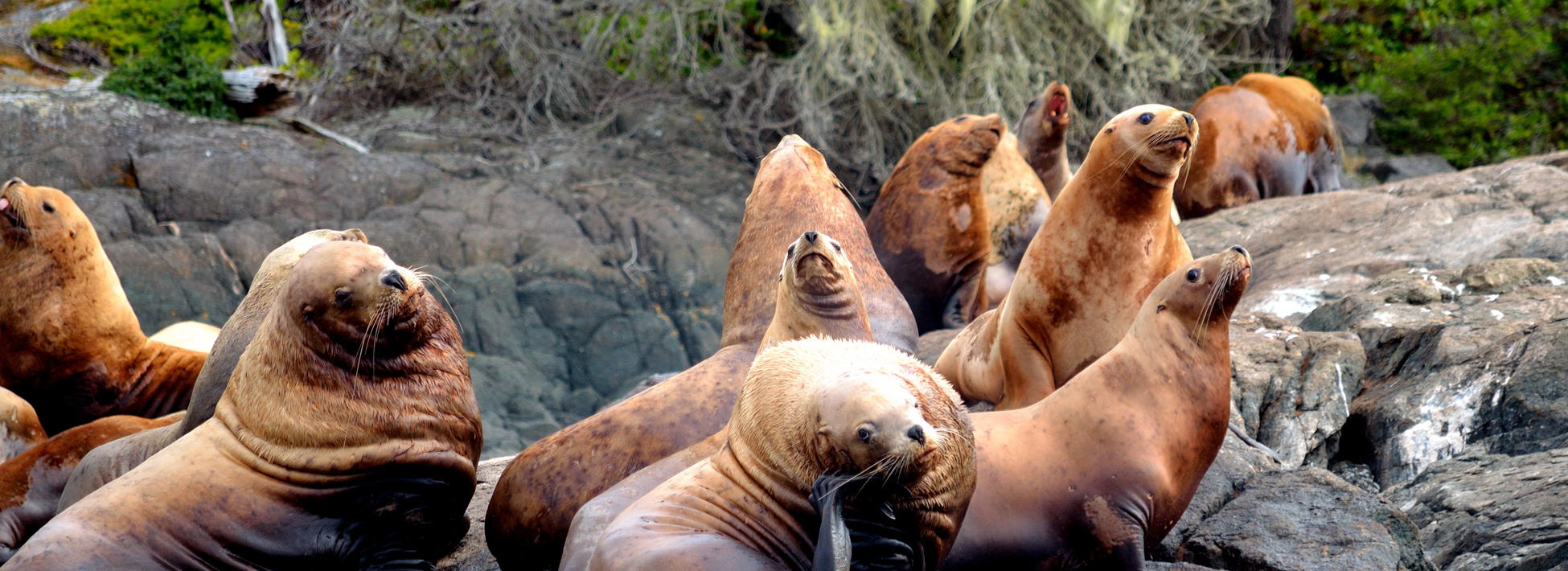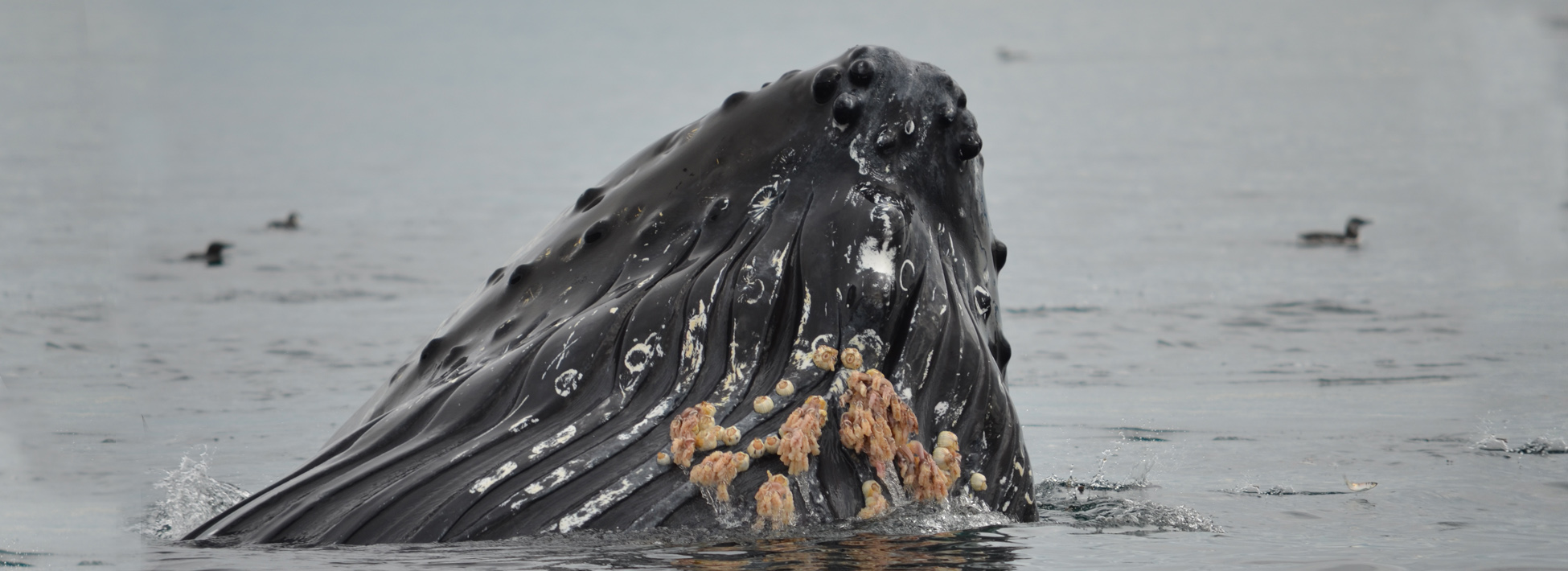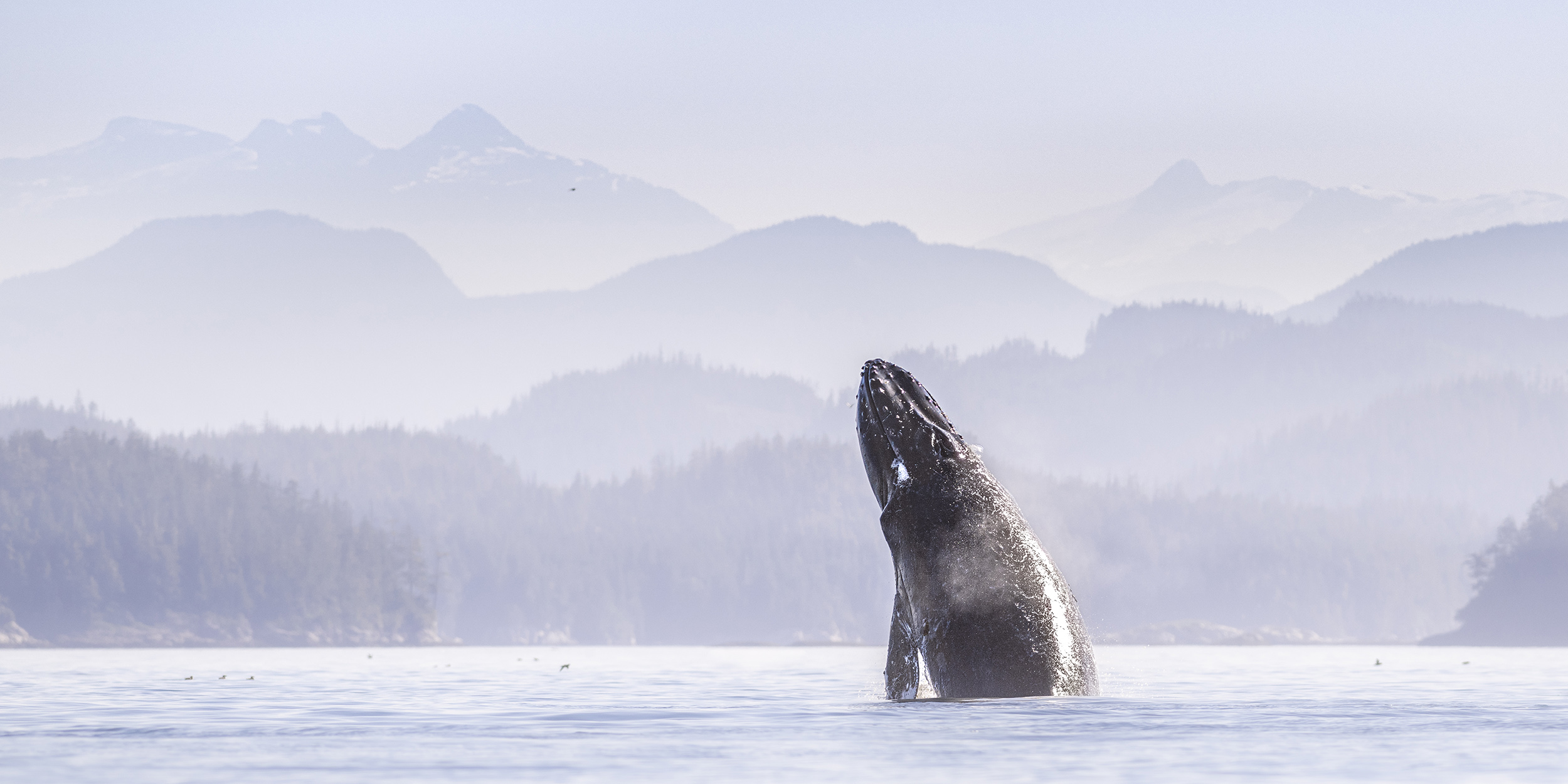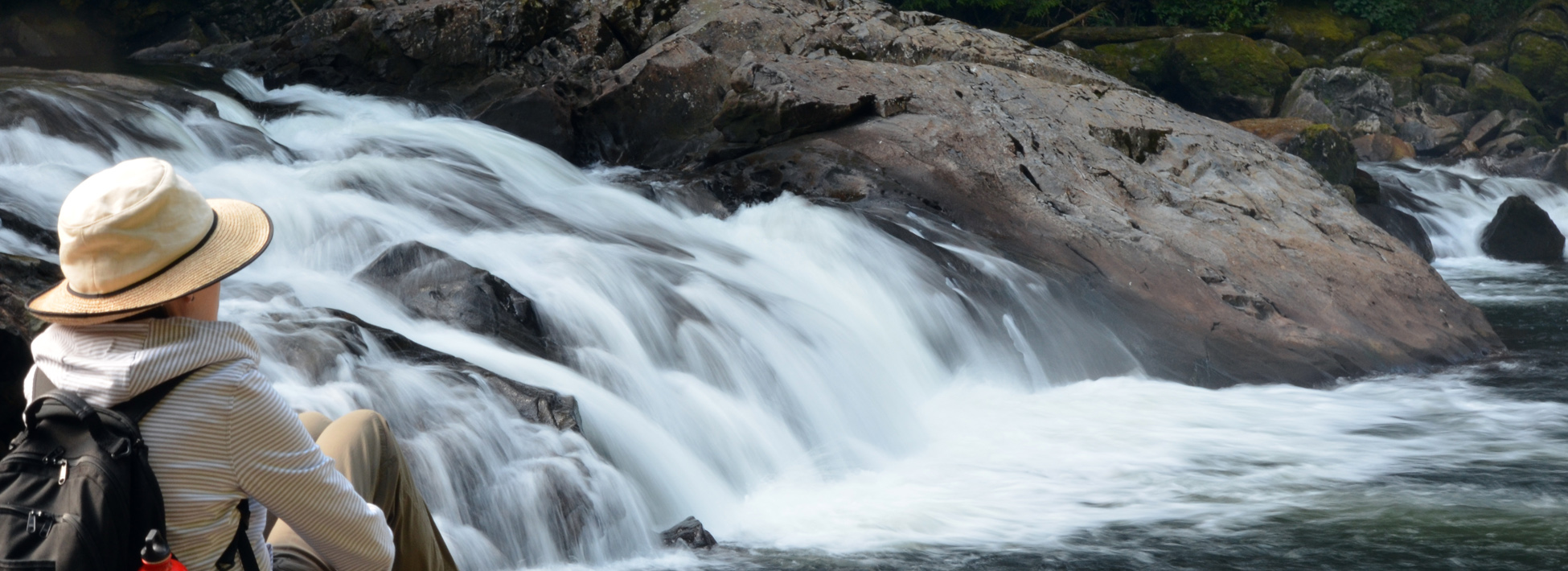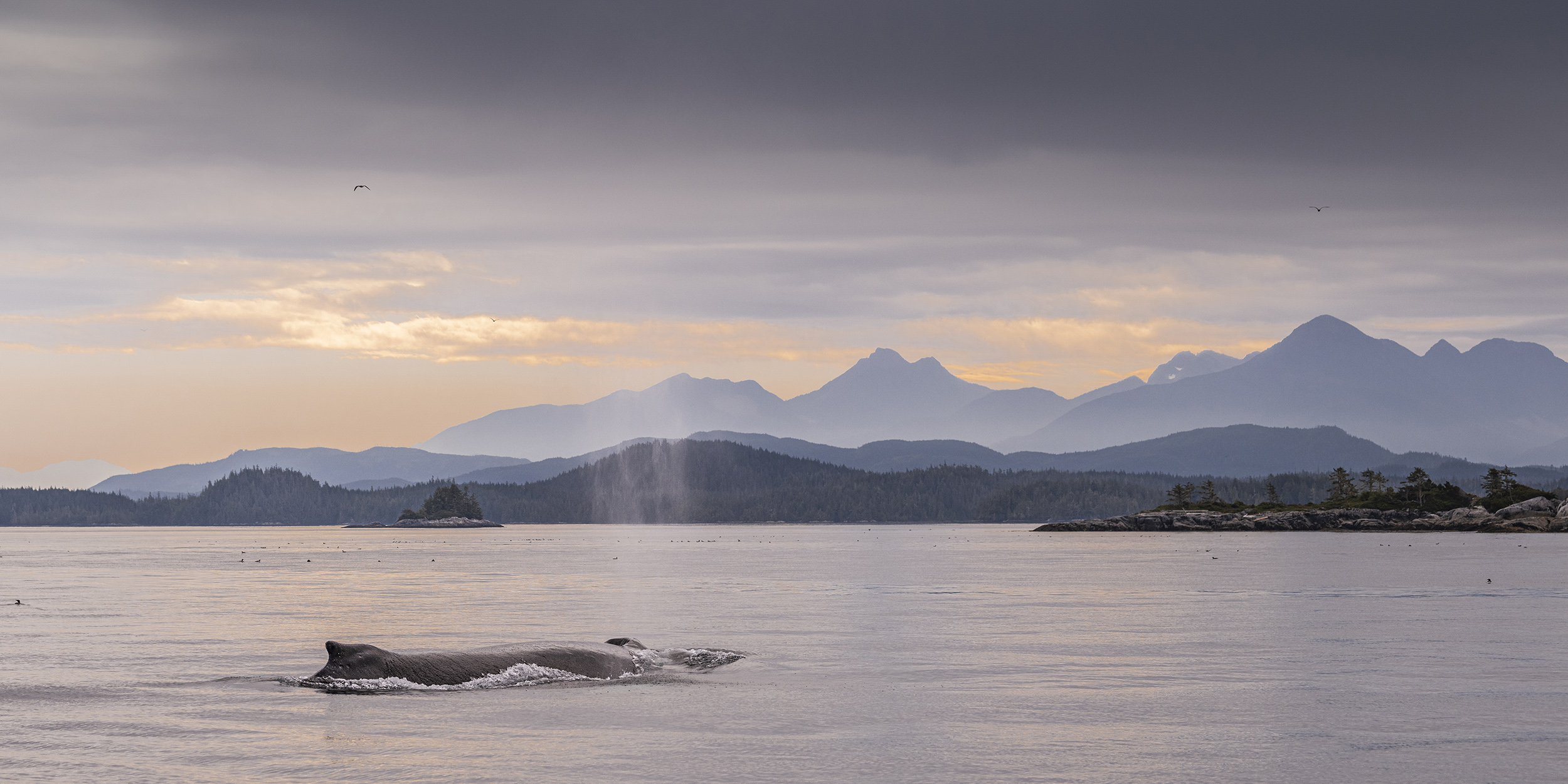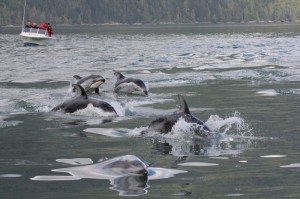I cannot think of another photo that I have posted of white-sided dolphins, which tells a more complete story than this one from James O’Donoghue. On tour days we frequently travel with another boat from the lodge when we run to Johnstone Strait near Telegraph Cove to look for whales thus the picture of one of our boats in the back ground. Notice the warm “floater” suits the guests wear while on the water. Even though this is summer it is cool on the water in the morning. Also it is easy to pick out the guide without the suit as we tend to be climatized to the weather. The most amazing aspect of the photo is the fact that it shows every stage of white sides’ “porpoise” (short term for the way dolphins come out of the water when traveling in a hurry). It shows them first breaking out of the water to clearing the water and then their returning dive. Also note the calm water surrounding the ripples indicating there are likely several hundred dolphins keeping the water churned up as they pass close to our boat.
Bald Eagles

Bald Eagles are frequently sighted in our area. At times they can be seen in large numbers. This is usually where food supplies are high. For example this could be in areas with high concentrations of baitfish or along the rivers in the fall when the salmon are spawning. They are not migratory, but do move around with the food supply. As mentioned earlier when the salmon are spawning we often see many along the rivers, while there will be fewer along the coastline. With little need for camouflage their white head and tail feathers can be spotted easily. The female is slightly larger and her white head extends down a bit farther onto the body, but it is subtle. It takes these birds 4.5 – 5 years to acquire this unique plumage. As juveniles they are a brown colour. With exceptional eyesight and the ability to view 270 degrees they are understandably often seen in high perches and in trees near points and passageways.
Visit our Blog